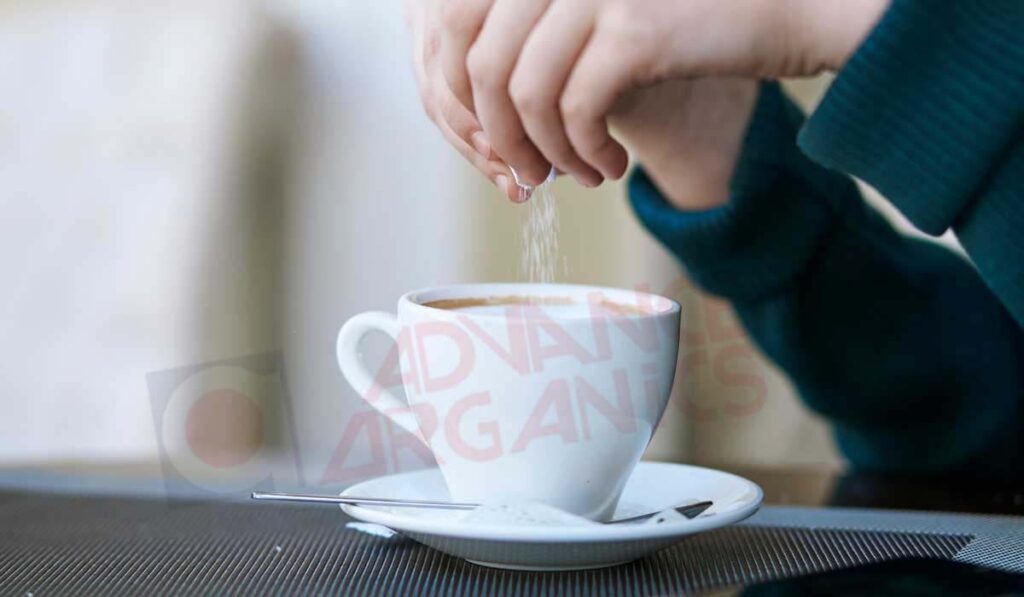What is Sucralose Made of? Sucralose a chlorinated version of sucrose (1,6-dichloro-1, 6-dideoxy-β-d-fructofuranosyl 4-chloro-4-deoxy-α-d-galacto-pyranoside or 4,1′,6′-trichloro-4,1′,6′-trideoxy-galacto-sucrose )is an intense sweetener, widely known as Splenda, that takes a white powder form. And we mean that sucralose is about 600 times sweeter than regular table sugar by STRENGTH. It was discovered in 1976 by carbohydrate research chemists at Queen Elizabeth College and Tate and Lyle, UK.
For centuries, artificial sweeteners such as sucralose have sparked controversy. But As we know excess of everything has downfalls so sucralose has its own list of risks such as reduced metabolism, GI disruptions, weight gain, and increased blood sugar levels are related to various sugar-free ingredients.
In certain conditions of use, the FDA approved sucralose for use in 15 food categories in 1998 and use as a general-purpose sweetener for food in 1999. Sucralose is a sweetener for purposes that can use in many foods, including baked goods, drinks, chewing gum, gelatin, and frozen dairy desserts. It is heat stable, which means it stays sweet even when used during baking at elevated temperatures, making it suitable to replace sugar in baked goods. In almost every supermarket, this sw or any other sweetener is found in packaged foods such as Aspartame, acesulfame k, Neotame, Sucrose.
What is Sucralose Made of?
Importantly, sucralose is made from popular table sugar, though it’s calorie-free. It premiered on the market in 1998. Sugar generates a multistep chemical process to make sucralose, in which three pairs of hydrogen-oxygen atoms replace with chlorine atoms. The body does not metabolize the resulting compound.
-
- Sucralose is sweetness ranges between 320 and 1,000 times sugar
- Splenda also has dextrose and maltodextrin which increases calorie content to 3.5 calories per gram
- Splenda may affect your gut health and causes GI issues.
- Sucrose is turned into sucralose from which human body cannot absorb any calories
- Eating Sucralose straight for 10-15 days may affect insulin sensitivity, and may lead to prediabetes in the long run.
- Studies on mice indicate that even much higher doses had no side effects like cancers on rodents.
- Artificial Sugars actually increases sugar cravings. We feel more un-satisfied and wanting more sugary items .
- Sucralose has no bitter aftertaste.
Generally, maltodextrin and table sugar are made from corn or other crops high in protein. They produce 3.36 calories per gram combined with sucralose. That means 11 percent of the calories in 2 teaspoons of granulated sugar are in one packet of Splenda. It is considered a low-calorie sweetener, therefore.

